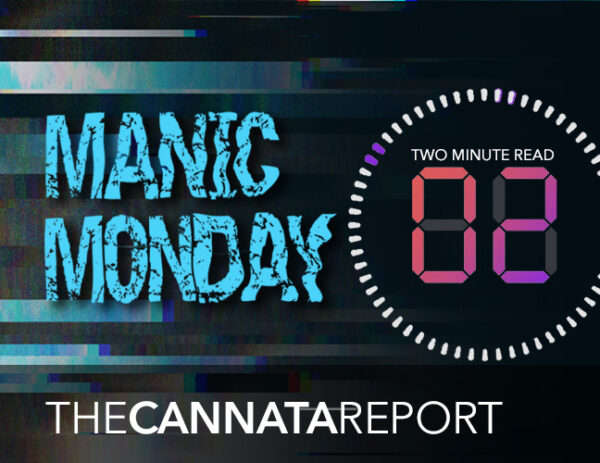Addressing the pros and cons of a hybrid workforce.
In March 2020, bustling offices across the country fell silent, replacing the break room chatter with the sometimes-awkward pauses of video conferencing. Many business owners were sure that their front-line staffers were as eager to return to the in-office “normal” as they were, but now, nearly three years later, it’s hard to argue that’s the case. Frustrations on both sides are leading to tension in the workplace.
For Patrick Flesch, president of Gordon Flesch Company in Madison, Wisconsin, remote work wasn’t tenable. “We were getting behind as an organization,” said Flesch. “Administratively, things like booking leases, billing customers, we were dropping little balls that we typically don’t. Not having that ability to lean over your cube to the person next to you and chat about an account, we found a real disconnect on the back end of the business.”
Flesch decided to bring everyone back to the office full time in June of 2021. But that decision wasn’t without risk. “It was not received very well, I’ll put it that way,” he laughed. “It made me feel like maybe we underestimated the gravity of the situation.”
The worry that employees might want to leave and, more troublingly, might be difficult to replace is rising for the first time in at least a generation. There are more jobs to fill than there are workers to fill them.
“We’re at zero unemployment in the channel,” said Paul Schwartz, president of Copier Careers, an industry-focused staffing firm based in Minnesota. “Not being able to sell and service and administer because you don’t have the people to do it? That’s frightening.”
If the demand for remote work is a drag on hiring, why not embrace it? That’s the argument made by Jonathan Shroyer, chief customer experience (CX) innovation officer at Arise Virtual Solutions, which operates globally on a fully remote basis. Five hundred employees and over 70,000 service partners work for Arise in an asynchronous, decentralized way.
“Pre-COVID, everyone was saying no, that can never work, that’s not possible, but post-COVID, everybody’s saying they’re learning a lot from it,” said Shroyer. “I did a survey a couple of weeks ago that said 12% of people want to return to the office 100% of the time. The workers’ mindset has shifted dramatically because it didn’t use to be that low.”
To many employers, 12% are the only ones they imagine could be productive. How hard could people be working if they’re at home where their couches and Netflix subscriptions are? To Shroyer, this is a question of psychology.
“Safety of trust is so key when you’re working remotely,” he said. “One of the biggest challenges in the trust conversation, we found, is occasionally a manager or an employee would forget to check in for two or three days, and they’d start creating stories in their head that weren’t true, like, ‘Oh, this person hates me.’ People make up silly, silly stuff when they’re by themselves.”
The solution for Arise was to ensure that they know how their workers feel and that they regularly provide positive reinforcement. Employees share their thoughts anonymously weekly, allowing management to have a nearly real-time sentiment check for the entire company.
“With remote work, there tends to be a greater need for acknowledgment,” said Shroyer. “If we’re working in an office together, you can see my facial expressions, or I might make a side comment and tell you I appreciate your work. In the Zoom world, sometimes those nuances don’t exist. When folks leave a company, it’s because they didn’t feel appreciated or respected because that natural, nuanced engagement doesn’t exist anymore.”
It can also help to take stock of the advantages of remote work, particularly the ability to spread out geographically and improve coverage with clients.
“We use the ‘follow-the-sun’ model,” said Shroyer. “Teams will be set up in two of the three major time zone regions, Asia, Europe, or the Americas. They can function well with two of the three because you’ll get about two or three hours of overlap.” Work tasks are tracked asynchronously through Asana, a project management tool that allows everyone on Arise’s global teams to track progress transparently.
Diversifying geographically can also help with the labor shortage, converting from a limited pool of local talent to recruiting from potentially the entire world.
“We tell employers that there are two supply chains they need to worry about,” said Nancy Horstman, vice president of resources and marketing manager at Copier Careers. “One is the supply chain from their OEM, which COVID has screwed up, and the other is the supply chain of candidates. They don’t have enough. I don’t know any dealership that has enough people.”
Employers may be tempted to recruit remote workers from lower-cost-of-living areas as cost savings, but Shroyer stresses the importance of paying workers for the value of their work, not their location. “If I’m creating thirty dollars’ worth of value, it’s the same thirty dollars whether I live in Austin or South Dakota,” said Shroyer. “It’s our responsibility as business leaders to create a profitably sustainable business that can meet those needs. Somebody’s going to pay their value. Are you going to lose all their knowledge because you’re concerned about ten or twenty thousand dollars?”
Even for companies that want or need to return to the office, it takes commitment and serious investment to keep labor resources steady in such a competitive market. Ultimately, most workers at Gordon Flesch Co. stayed on, incentivized by a 60-day notice period that gave them time to sort out childcare and a substantial office remodel that upgraded workplace community spaces like the cafeteria and added some softer, more homelike areas with couches and chairs for breaks.
The other key to Gordon Flesch’s success was flexibility, which Shroyer and Copier Careers advocate as well. The company sent out an employee survey three months after the return to the office and got a clear message. Staffers wanted a hybrid option, at least one day a week to work from home. Instead of fighting this, Gordon Flesch embraced it, allowing workers to each pick the day they’d work remotely and providing them with all the necessary equipment. The results were clear.
“To my knowledge, we didn’t lose one employee as a result of this,” said Flesch. “No one left saying they wanted to be 100% remote.”
What’s to come of the remote work revolution long term? Regardless of how many workers say they want work from home forever, as Schwartz observed, “I don’t see anyone selling their buildings.” The important thing for companies, whether in-office or remote, is to listen to workers, respect them, and be responsive.”
“Sometimes you can move the system, sometimes you can adjust the system that you’re working in, and sometimes you just have to start your own system,” added Shroyer. Even companies that struggled to find the right balance during the pandemic can still get there. “You just fell down a little bit; that’s all you did,” said Shroyer. “Pick yourself up and keep going.”
_________________________
To become a subscriber, visit www.thecannatareport.com/register or contact cjcannata@cannatareport.com directly. Bulk subscription rates are also available upon request and included in our media kit.




